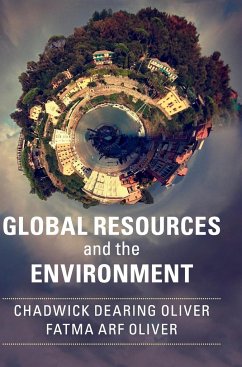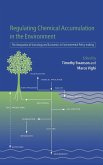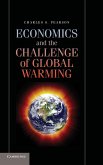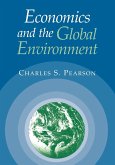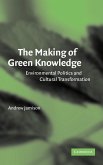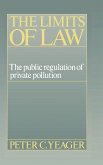- Gebundenes Buch
- Merkliste
- Auf die Merkliste
- Bewerten Bewerten
- Teilen
- Produkt teilen
- Produkterinnerung
- Produkterinnerung
An illustrated overview of the sustainability of natural resources and the social and environmental issues surrounding their distribution and demand.
Andere Kunden interessierten sich auch für
![Regulating Chemical Accumulation in the Environment Regulating Chemical Accumulation in the Environment]() M. Swanson / Marco Vighi (eds.)Regulating Chemical Accumulation in the Environment97,99 €
M. Swanson / Marco Vighi (eds.)Regulating Chemical Accumulation in the Environment97,99 €![Economics and the Challenge of Global Warming Economics and the Challenge of Global Warming]() Charles S. PearsonEconomics and the Challenge of Global Warming70,99 €
Charles S. PearsonEconomics and the Challenge of Global Warming70,99 €![Economics and the Global Environment Economics and the Global Environment]() Charles S. PearsonEconomics and the Global Environment70,99 €
Charles S. PearsonEconomics and the Global Environment70,99 €![The Making of Green Knowledge The Making of Green Knowledge]() Andrew JamisonThe Making of Green Knowledge117,99 €
Andrew JamisonThe Making of Green Knowledge117,99 €![The Theory of Environmental Policy The Theory of Environmental Policy]() William J. BaumolThe Theory of Environmental Policy102,99 €
William J. BaumolThe Theory of Environmental Policy102,99 €![A Global History of Literature and the Environment A Global History of Literature and the Environment]() A Global History of Literature and the Environment161,99 €
A Global History of Literature and the Environment161,99 €![The Limits of Law The Limits of Law]() Peter Cleary YeagerThe Limits of Law133,99 €
Peter Cleary YeagerThe Limits of Law133,99 €-
-
-
An illustrated overview of the sustainability of natural resources and the social and environmental issues surrounding their distribution and demand.
Hinweis: Dieser Artikel kann nur an eine deutsche Lieferadresse ausgeliefert werden.
Hinweis: Dieser Artikel kann nur an eine deutsche Lieferadresse ausgeliefert werden.
Produktdetails
- Produktdetails
- Verlag: Cambridge University Press
- Seitenzahl: 548
- Erscheinungstermin: 18. April 2019
- Englisch
- Abmessung: 250mm x 175mm x 34mm
- Gewicht: 1114g
- ISBN-13: 9781107172937
- ISBN-10: 1107172934
- Artikelnr.: 50018254
- Herstellerkennzeichnung
- Libri GmbH
- Europaallee 1
- 36244 Bad Hersfeld
- gpsr@libri.de
- Verlag: Cambridge University Press
- Seitenzahl: 548
- Erscheinungstermin: 18. April 2019
- Englisch
- Abmessung: 250mm x 175mm x 34mm
- Gewicht: 1114g
- ISBN-13: 9781107172937
- ISBN-10: 1107172934
- Artikelnr.: 50018254
- Herstellerkennzeichnung
- Libri GmbH
- Europaallee 1
- 36244 Bad Hersfeld
- gpsr@libri.de
Chadwick Dearing Oliver is the Pinchot Professor of Forestry and Environmental Studies and Director of the Global Institute of Sustainable Forestry at Yale University, Connecticut. His research focuses on global issues of landscape management, and he has considerable experience advising public and private forest resource organizations in the United States and abroad. He is the author of the highly cited book Forest Stand Dynamics, now in its second edition (1996).
Preface
Part I. Introduction, Dynamic Systems, and Change: 1. Socio-environmental systems
2. A perspective on dynamic systems
3. Change, sustainability, and resilience
Part II. People: 4. Where people live, communicate, and interact
5. People, societies, populations, and changes
6. Resources, governments, and other social influences
Part III. Climates: 7. Global distribution of climates
8. Greenhouse gases, atmosphere, and climates
9. Past and future climate changes
Part IV. Landforms: 10. Landforms and soils
11. Bedrock landforms
12. Landforms of transported materials
Part V. Biodiversity: 13. Biodiversity: individual species
14. Biodiversity: communities and landscapes
15. Robust and threatened species, communities
16. Managing biodiversity
Part VI. Water: 17. The hydrologic cycle
18. The annual hydrograph and water use
19. Managing and mitigating the hydrologic system
Part VII. Agriculture: 20. Food groups and nutrition
21. Agriculture and the green revolution
22. Future agriculture production and distribution
Part VIII. Energy: 23. Energy sources, the energy cycle, exergy
24. Conserving energy and renewable energy
25. Future energy: reducing fossil fuel use
Part IX. Minerals: 26. Rocks and mineral properties, mining
27. Rocks and minerals: production, use, and distribution
Part X. Forests: 28. Forests, ecosystem services, and timber
29. Forest distribution, area, and volume changes
30. Silviculture, forest degradation, and landscape management
Part XI. Perspective: 31. Integrating the environment, resources, and people
Appendix I. Country groups used in analyses
Appendix II. Elements, chemical symbols, atomic numbers, and masses
Index.
Part I. Introduction, Dynamic Systems, and Change: 1. Socio-environmental systems
2. A perspective on dynamic systems
3. Change, sustainability, and resilience
Part II. People: 4. Where people live, communicate, and interact
5. People, societies, populations, and changes
6. Resources, governments, and other social influences
Part III. Climates: 7. Global distribution of climates
8. Greenhouse gases, atmosphere, and climates
9. Past and future climate changes
Part IV. Landforms: 10. Landforms and soils
11. Bedrock landforms
12. Landforms of transported materials
Part V. Biodiversity: 13. Biodiversity: individual species
14. Biodiversity: communities and landscapes
15. Robust and threatened species, communities
16. Managing biodiversity
Part VI. Water: 17. The hydrologic cycle
18. The annual hydrograph and water use
19. Managing and mitigating the hydrologic system
Part VII. Agriculture: 20. Food groups and nutrition
21. Agriculture and the green revolution
22. Future agriculture production and distribution
Part VIII. Energy: 23. Energy sources, the energy cycle, exergy
24. Conserving energy and renewable energy
25. Future energy: reducing fossil fuel use
Part IX. Minerals: 26. Rocks and mineral properties, mining
27. Rocks and minerals: production, use, and distribution
Part X. Forests: 28. Forests, ecosystem services, and timber
29. Forest distribution, area, and volume changes
30. Silviculture, forest degradation, and landscape management
Part XI. Perspective: 31. Integrating the environment, resources, and people
Appendix I. Country groups used in analyses
Appendix II. Elements, chemical symbols, atomic numbers, and masses
Index.
Preface
Part I. Introduction, Dynamic Systems, and Change: 1. Socio-environmental systems
2. A perspective on dynamic systems
3. Change, sustainability, and resilience
Part II. People: 4. Where people live, communicate, and interact
5. People, societies, populations, and changes
6. Resources, governments, and other social influences
Part III. Climates: 7. Global distribution of climates
8. Greenhouse gases, atmosphere, and climates
9. Past and future climate changes
Part IV. Landforms: 10. Landforms and soils
11. Bedrock landforms
12. Landforms of transported materials
Part V. Biodiversity: 13. Biodiversity: individual species
14. Biodiversity: communities and landscapes
15. Robust and threatened species, communities
16. Managing biodiversity
Part VI. Water: 17. The hydrologic cycle
18. The annual hydrograph and water use
19. Managing and mitigating the hydrologic system
Part VII. Agriculture: 20. Food groups and nutrition
21. Agriculture and the green revolution
22. Future agriculture production and distribution
Part VIII. Energy: 23. Energy sources, the energy cycle, exergy
24. Conserving energy and renewable energy
25. Future energy: reducing fossil fuel use
Part IX. Minerals: 26. Rocks and mineral properties, mining
27. Rocks and minerals: production, use, and distribution
Part X. Forests: 28. Forests, ecosystem services, and timber
29. Forest distribution, area, and volume changes
30. Silviculture, forest degradation, and landscape management
Part XI. Perspective: 31. Integrating the environment, resources, and people
Appendix I. Country groups used in analyses
Appendix II. Elements, chemical symbols, atomic numbers, and masses
Index.
Part I. Introduction, Dynamic Systems, and Change: 1. Socio-environmental systems
2. A perspective on dynamic systems
3. Change, sustainability, and resilience
Part II. People: 4. Where people live, communicate, and interact
5. People, societies, populations, and changes
6. Resources, governments, and other social influences
Part III. Climates: 7. Global distribution of climates
8. Greenhouse gases, atmosphere, and climates
9. Past and future climate changes
Part IV. Landforms: 10. Landforms and soils
11. Bedrock landforms
12. Landforms of transported materials
Part V. Biodiversity: 13. Biodiversity: individual species
14. Biodiversity: communities and landscapes
15. Robust and threatened species, communities
16. Managing biodiversity
Part VI. Water: 17. The hydrologic cycle
18. The annual hydrograph and water use
19. Managing and mitigating the hydrologic system
Part VII. Agriculture: 20. Food groups and nutrition
21. Agriculture and the green revolution
22. Future agriculture production and distribution
Part VIII. Energy: 23. Energy sources, the energy cycle, exergy
24. Conserving energy and renewable energy
25. Future energy: reducing fossil fuel use
Part IX. Minerals: 26. Rocks and mineral properties, mining
27. Rocks and minerals: production, use, and distribution
Part X. Forests: 28. Forests, ecosystem services, and timber
29. Forest distribution, area, and volume changes
30. Silviculture, forest degradation, and landscape management
Part XI. Perspective: 31. Integrating the environment, resources, and people
Appendix I. Country groups used in analyses
Appendix II. Elements, chemical symbols, atomic numbers, and masses
Index.

